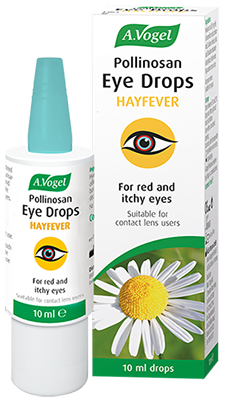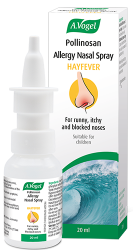A.Vogel search
When the internal search is activated, personal data such as your IP address is transmitted to our search engine Cludo. Data is thus transferred to a third country. Please click here if you want to display the internal search. You can find more information on data protection here: Privacy policy.Pollen Count in East London Today
Your local 5-day pollen forecast
Pollen levels are to be low/moderate across East London over the course of the next week.
Have a look at the Pollen Count chart below for a more visual representation of the pollen forecast for the week ahead. The chart also highlights the levels of different types of pollen: grass, trees (birch, cypress, oak, plane and sweet chestnut) and weeds.
Bookmark or favourite this page and check back daily for the latest information.
| Fri 02 | Sat 03 | Sun 04 | Mon 05 | Tue 06 | |
|---|---|---|---|---|---|
| Overall |  |
 |
 |
 |
 |
| Trees | |||||
| Birch |  |
 |
 |
 |
 |
| Cypress |  |
 |
 |
 |
 |
| Oak |  |
 |
 |
 |
 |
| Plane tree |  |
 |
 |
 |
 |
| Sweet chestnut |  |
 |
 |
 |
 |
| Grass | |||||
| Grass |  |
 |
 |
 |
 |
| Weeds | |||||
| Nettle |  |
 |
 |
 |
 |

|
|||||
A.Vogel Pollinosan Hayfever Eye Drops | for Quick Relief of Red and Itchy Eyes | with Chamomile and Soothing Hyaluronic Acid | 300 Drops | 10ml
£13.99 (10ml) In Stock Get it tomorrow, 3rd January.
In recent years London’s East End has seen an influx of ‘hipster’ types and complaints of gentrification, particularly in areas like Shoreditch. Once a dark, mysterious place outside London’s city walls, East London is now a trendy, gritty area of town, full of indie bars, cafés and restaurants, as well as markets, vintage shops and theatres.
It has grown to be a popular area for tourists, with hotel prices slightly cheaper here than central London, but still within easy reach of the city centre.
You’re likely to come across less greenery in East London than in North or West London, but there are still a few notable areas to avoid. Luckily, there is plenty to do in East London to keep you busy on high pollen count days.
As with any city, hayfever symptoms are caused by tree, grass and weed pollen. The London plane is a common tree across London, unsurprisingly. However, being the centre of global trade, London is inevitably home to a wide variety of tree species, encouraged in part by the long history of Royalty in London, as these families tended to bring in exotic trees and plants from other countries to populate their grand, beautiful gardens.
Popular trees of the 18th century were elm and sycamore, but today you’ll find an enormous variety, including oak, willow, maple and birch.
East London is home to less Royal gardens so is perhaps slightly less rich in tree diversity, but there are still plenty of green spaces to cause problems to hayfever sufferers.
Like most areas of any city, East London has a few notable parks and green spaces, and these should be avoided on high pollen count days. Even on low pollen count days, these areas will have higher levels of pollen.
- Hackney downs. This large park features tennis courts, a bowling green and a basketball court, as well as open grassy spaces, a patch of wildflowers and a variety of trees, including ash, hazel, elm, birch, cypress, cedar and oak
- Victoria Park. This park features open grassy areas, a few ponds and tree-lined footpaths, with the Regent’s Canal at one end. It is one of the largest parks in the East End, so is definitely one to avoid on high pollen count days
- Mile End Park. Running alongside a section of the Regent’s Canal, not far from Victoria Park, Mile End Park contains large grassy areas and several large clusters of trees. It’s a great spot for sunbathing down by the canal, but not an ideal place for hayfever sufferers
- Tower Hamlets Cemetery Park. This disused cemetery closed for burials in 1966. It is now a nature reserve, and its thick, dense vegetation and woodlands make it a pollen hotspot
- London Fields. This large park in Hackney is a popular spot during the summer, but its open, grassy areas and tree lined paths make it a no-go for hayfever sufferers
- Weavers Fields and Bethnal Green Gardens. These parks sit near each other and both feature grassy, open spaces lined by a number of trees, including willow, poplar and birch.
An afternoon wandering around Shoreditch will reveal plenty of interesting bars and cafes, kitsch shops and plenty of arts and culture. If you’re looking for something more specific to do while avoiding pollen, we suggest:
- See a film, play or performance at Rich Mix. With theatre, dance performances, spoken word recitals, comedy, live music, art exhibitions and a cinema, you’re bound to find something interesting here!
- Spend an afternoon with coffee, cake and cats at London’s first cat café! Lady Dinah’s Cat Emporium offers tea, coffee, a daily menu, high tea, and of course, the chance to make some feline friends. Provided you aren’t allergic to cats as well as pollen, this makes a great way to relax. Booking is required, so make sure to plan ahead
- Pick up a bargain at one of the East End’s great markets. Find fashion, food, jewellery and more at Old Spitalfields Market, Petticoat Lane Market and Brick Lane Market
- Try something new at the National Centre for Circus Arts – go on an ‘experience day’ and learn to juggle, use a trapeze and walk a tightrope! There’s a variety of kids and adult experience days so everyone can have a go!
- Visit the Barbican Centre, Europe’s largest multi-arts and conference venue to see a film or show, or just admire the grand architecture
- Pass some time playing board games at Draughts, London’s first café dedicated to board games. You’ll find traditional games, new games, family games and ‘serious business’ games. Plus the food is great!
- Head down to Canary Wharf for some retail therapy, where you’ll find plenty of shops, restaurants, bars and cafes, and even a cinema. There are also some great sights to be seen down by the docks – the perfect place for a wander!
Our hayfever products such as Pollinosan tablets and Pollinosan nasal spray can be found in a number of outlets across East London – or you can buy online!
You can usually find our hayfever products in Holland & Barrett, or you can try your local A.Vogel stockist: you’ll find Portman’s Pharmacy not far from the Barbican Theatre; Planet Organic near the Coventry University London Campus, not far from Liverpool Street station; and The Grocery near Hoxton station.
 Looking for relief of red and itchy eyes due to hayfever?
Looking for relief of red and itchy eyes due to hayfever?
A.Vogel Pollinosan Hayfever Eye Drops contain hyaluronic acid (from vegetable source) and can be used for quick relief of red and itchy eyes due to hayfever. Suitable for contact lense users.
To find local independent stores in your area that sell A.Vogel Pollinosan Hayfever Eye drops, simply type your postcode below.
UK 5-day pollen forecast
Stay up to date with the latest pollen information by finding your local pollen forecast from over 30,000 locations across the UK.







